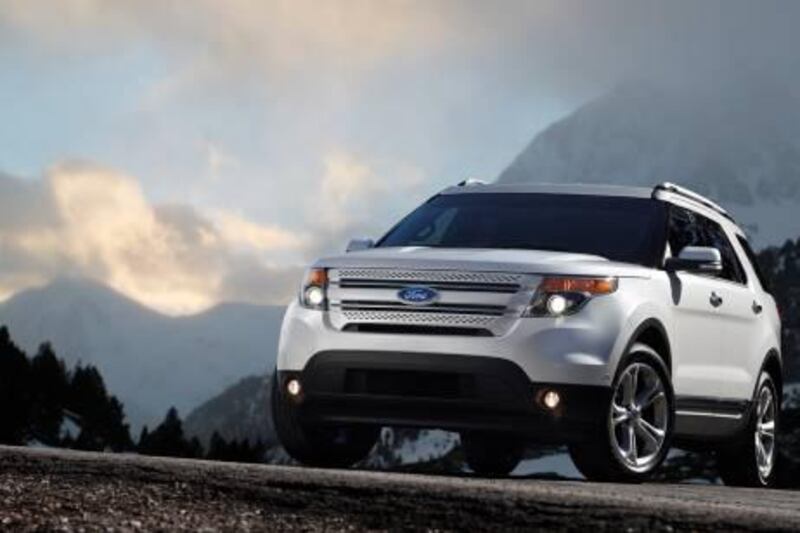Something had to change. That much was known. Certainly, the status quo wasn't working. What once had been the pillar of Ford's marketing machine, the best-selling SUV and for one glorious year (2000), the best selling non-pickup in North America - edging out even the then-indomitable Toyota Camry - had been laid to waste.
Ecoweenies would have you believe it was concern for the environment that cooled the Explorer's popularity. But, while fuel economy certainly would have had an effect on its desirability, even the green movement isn't powerful enough to force the Explorer's almost 90 per cent decline in sales over the past decade.
Credit, or more accurately blame, for that catastrophe must go to the Ford/Firestone fiasco that so blighted the Explorer's name a decade ago. Firestone Wilderness AT tyres would, under certain conditions deflate and, said reports, send Explorers tumbling into the ditch.
_____________________
• We put more new models to real-world challenges at Road Test
_____________________
So, while Ford is right to trumpet the new Explorer's greenness ("consumes less gas" does make a far more appealing advertising slogan than "now rolls over less"), the company had to put forth an all-new Explorer, one it could proclaim was totally reformulated not only in shape but also in form.
And one doesn't get many intergenerational changes more dramatic than Ford's rejigging of its iconic SUV. Indeed, other than the name, little is carried over. What was once a truck-based body-on-frame chassis is now a modern unibody. Front-wheel drive has replaced rear drive as the de facto drivetrain preference. Low and lean has replaced tall and boxy. In fact, the new Explorer almost looks modern - never more so than inside its cabin.
If one is looking for the reason behind Ford's recent success, search no further. The Explorer's interior, as with all the other Fords I've tested recently, is first rate. The seats are comfy (though one sits far lower than in the previous Explorer), the optional leather - as the original's clientele would have opined - is classy. And the build quality is almost Germanic, with tight gaps and smooth edges. The design of the entire dashboard - with special accolades to the gauge set, which sees the tachometer seamlessly morph into different shapes depending on the required functionality - is also commendable. Seating room is generous, even for the third row, which can be had with power operation so slick it should be in a Mercedes. Based on the same platform as the Flex, there's also plenty of cargo room.
Central to the theme is the optional MyFord touch system, essentially a more user-friendly, voice- and touch-screen-activated version of BMW's original iDrive-like systems. Virtually everything - climate control, audio system, navigation, etc - can be controlled via a steering wheel-mounted button and touch-screen icon.
Giving MyFord its due, the system is at least as user-friendly as any other system and far ahead of most. That said, MyFord is a very powerful system with numerous subsystems that I couldn't always decipher or, more accurately, didn't have the patience to decipher.
If the cabin is the Explorer's best feature and the MyFord system its most involving, the crossover's performance is its most remote and obvious shortcoming. Ford makes much of the fact the new unibody Explorer is lighter than its predecessor and that the new 3.5L V6's 290hp is superior to the ageing 4.0L V6 it replaces. But this is a truck, that still weighs almost two-and-a-half tons. So, it's not exactly sprightly. Oh, it will move - acceleration to 100kph is said to take less than eight seconds - but you feel the 3.5L working when calling for throttle. While cruising or under light acceleration, the V6's comportment is quite civilised - smooth and quiet. Call the engine's performance adequate, then, though the new design's credible fuel economy is much improved over the gas guzzler of old.
The same applies to the Explorer's handling. Neither sporting or limp, the comportment of the chassis is commendable if a little mundane. All four wheels are independently suspended, a major improvement over the old Explorer, and the ride isn't overly stiff, yet roll is contained.
Ford also takes pains to claim that, despite its more mainstream unibody design, the new Explorer still has some off-road props. Departure and approach angles are both more than 20 degrees, and the minimum ground clearance is an adequate 193mm. And, as mentioned previously, the AWD system is calibrated for different low-traction terrains with Hill Descent Control making downhill sections less unnerving. Again, competent, but not exemplary.
Indeed, were it not for the styling (which deserves the rave reviews it's getting), I could easily have thought I was driving a Toyota. Whether you think that a compliment or insult very much depends on your view of the automobile in general.






